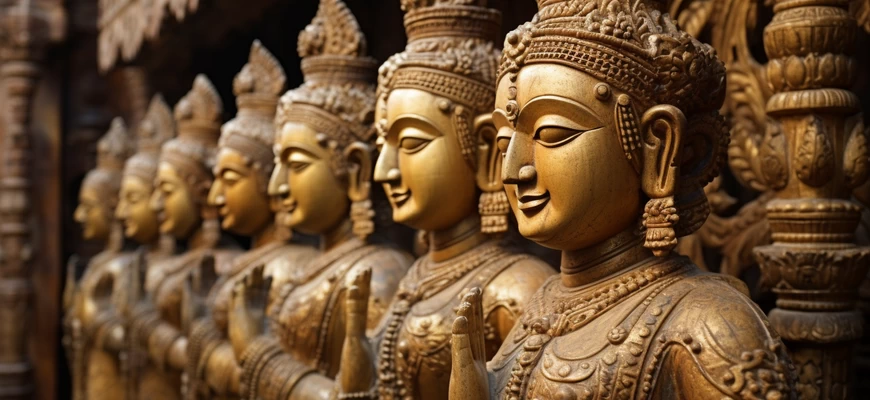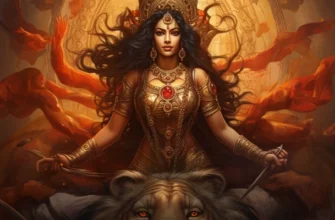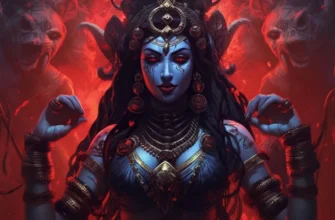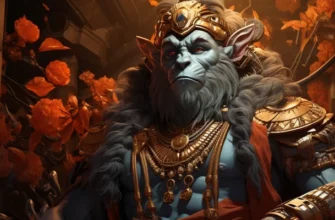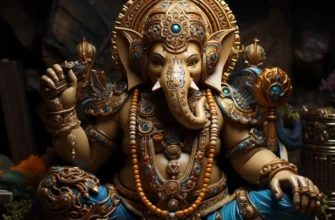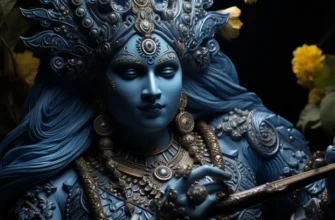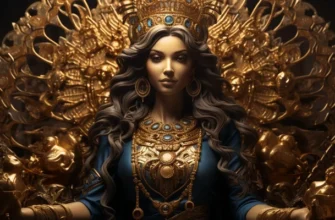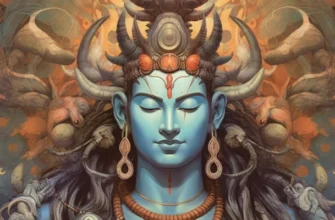The culture of ancient India is known for its diversity and richness. It was formed in the territory that encompasses modern India, Pakistan, and Bangladesh, and spans the period from 2600 BC to the mid-19th century, when India was under British colonial rule.
Spirituality was a major aspect of ancient Indian culture. Religions such as Hinduism, Buddhism, and Jainism formed in India and spread throughout the world. Hinduism, the most widespread religion in India, was invented about 2000 years ago and became the source of other religions such as Buddhism and Sikhism.
The culture of ancient India is also known for its art. Indian art includes many varieties, including architecture, painting, sculpture, and music. The works of artists reflected the spirituality and religious beliefs of the people of that time.
The culture of ancient India is also known for its scientific achievements. Scientists of that time were engaged in mathematics, astronomy, medicine, and philosophy. They developed a number system, including the number zero, and made discoveries in astronomy.
All these aspects of ancient Indian culture have left their mark on modern India and the world at large. They have become the spiritual heritage of a civilization that has given the world countless cultural and intellectual achievements that have influenced art, philosophy, science, and religion.
Hinduism, Buddhism, and Jainism, the main religions of ancient India, have a significant influence on modern Indian society and culture. These religions teach moral values, life principles, and ways of spiritual development. Indian art, such as traditional Indian painting, sculpture, and architecture, also has deep roots in ancient Indian traditions.
In the field of science, ancient India made a great contribution to the development of mathematics and astronomy. For example, Indian mathematics used zero and the decimal system, which became the standard around the world. Indian scientists also engaged in the study of nature, philosophy, and medicine, treating these issues with great seriousness and scientific precision.
All of these achievements are testament to the rich cultural and intellectual heritage that ancient India passed on to subsequent generations. Modern India has preserved and developed these traditions, strengthening its influence on world culture and science.
Religion
Ancient India is known for its diverse and multilayered religious heritage. Indian religions, such as Hinduism, Buddhism, and Jainism, were formed at different times and have their own traditions and beliefs. All these religions have influenced Indian culture, philosophy and art.
Hinduism, the oldest religion in India, consists of numerous streams and schools of thought. Its main texts – the Vedas, Upanishads, and Bhagavad Gita – contain beliefs about reincarnation and karma, as well as the multifaceted nature of the divine being. Hinduism also includes various forms of worship, such as temple worship, god worship, and yoga practices.
Buddhism, founded by Shakyamuni Buddha in the 6th century BC, was created as a religion that teaches about the path to enlightenment. Buddhism does not recognize a god and the hope of eternal life, instead teaching about liberation from suffering and liberation from the cycle of rebirth. Buddhism also contributed to the development of art, as its message is often reflected in artistic expression.
Jainism emerged in the 6th century BC as a religion that teaches non-violence and respect for all living things. Jainism does not recognize the existence of God, but believes that every soul can achieve eternal happiness and freedom. The religion has its own saints and a special code of ethics, including non-violence, truthfulness, and renunciation of material desires.
All of these religions have played an important role in shaping Indian culture and philosophy, influencing aspects of life such as art, literature, music, and architecture. Indian culture is known for its richness and diversity, which is reflected in its religious traditions and beliefs.
In addition, India is also home to another religious tradition, Sikhism, which originated in the 15th century and has beliefs about one God and personal development through service to others.
In general, the religions of ancient India are complex and multifaceted, but they all work together to help people find their place in life and understand the world. These religions have influenced the culture of India and the world at large and still have a significant impact on modern Indian society and culture.
Temple architecture
The temple architecture of ancient India is one of the most fascinating and magnificent forms of architecture in the world. Indian temples are located all over the country and have a variety of styles and shapes. The most famous of them are the Kshetra Temple (Jagannath Puri) and the Taj Mahal.
The temples of ancient India were very diverse in their shapes and styles. They had complex geometric shapes and details, patterns and various geometric ornaments. The temple architecture of India reflects religious beliefs and cultural traditions that have passed through the centuries.
The most famous forms of Indian temples are the shikhara (humped high roof) and the mandap (open space for gatherings). The temples have intricate paintings and sculptures made of local materials such as stone, marble, granite, and others.
Indian temples have different purposes, from worshiping God to holding various religious and cultural events. The temple architecture of India is an important part of the country’s cultural heritage and attracts tourists from all over the world.
Philosophy and spiritual practices
The philosophy and spiritual practices of ancient India have a profound influence on world culture and thinking. Indian philosophy offers a wide range of ideologies that are reflected in religious traditions such as Hinduism, Buddhism, and Jainism. The philosophy of ancient India focuses on a high level of spirituality and self-improvement practices that allow you to achieve inner peace and harmony.
One of the most famous philosophical ideologies of ancient India is yoga. It is a set of philosophical, spiritual and physical practices aimed at achieving inner harmony and harmony. Yoga includes such components as meditation, asanas (physical postures), pranayama (breath control), and others.
Another well-known ideology is Buddhism, which has spread not only in India but throughout the world. Buddhism strives to achieve nirvana, a state of complete detachment from suffering and desires. The main principles of Buddhism are the renunciation of material things and conditions, the search for inner wisdom and peace.
Another important philosophical ideology is Jainism, which seeks to achieve inner harmony and peace through the rejection of violence, desires, and egoism.
In addition, Ancient India developed the philosophy of darshan, which includes six main areas: sankhya, yoga, nyaya, vedanta, mimansa, and vaisheshika. Each of these areas focuses on different aspects of life and philosophy, but the common goal is to achieve inner harmony and spiritual development.
Other important practices of ancient India include karma yoga, bhakti yoga, gyan yoga, and jnana yoga. Each of these practices has its own unique aspects and methods, but in general they are aimed at developing spirituality and harmony.
In addition to this, ancient India also developed important philosophical and spiritual texts such as the Vedas, Upanishads, Ramayana, and Mahabharata. These works contain important philosophical concepts and reflect the deep spiritual heritage of ancient India.
In general, the philosophy and spiritual practices of ancient India have had a significant impact on world culture and thinking, and continue to be a source of inspiration for many people around the world who seek spiritual harmony and understanding of life.
Art
The art of ancient India was inextricably linked to religion and philosophy, and reflected the deep spiritual and moral values of the civilization.
One of the most famous art forms of ancient India is the art of sculpture. Sculptures were made of various materials, including stone, bronze, wood, and clay. Many of these sculptures depicted gods, goddesses, and other spiritual figures, and they were often used to decorate temples and other holy places.
Other art forms of ancient India include drawings, paintings, mosaics, architecture, and various embroideries. Drawings and paintings were often made on fabrics and walls of buildings, and they reflected a variety of themes, including religious stories and episodes from Indian mythology.
The architecture of ancient India is known for its temples, palaces, and forts. Many of these structures have complex architecture, with great attention to detail and luxurious decoration. Most temples are known for their elaborate domes, high walls, and stone cliffs perched on top of mountains.
In general, the art of ancient India reflects the great cultural and religious heritage of the civilization.
Also worth noting are the traditional dances and music of ancient India, which are also deeply rooted in religious and spiritual practices. Dances were performed both on the street and in temples and palaces, and they reflected various religious stories and episodes from mythology.
The music of ancient India, known as Indian classical music, has a complex structure and is based on the raga system, which includes melodies and rhythmic patterns. Indian classical music is performed on a variety of instruments, including the sitar, tabla, and the famous bamboo flute, the bansuri.
Another important form of art in ancient India was manuscripts and miniatures that depicted various stories and episodes from Indian mythology. These manuscripts were executed with great attention to detail and were very decorative, using bright colors and intricate patterns.
In general, the art of ancient India was multifaceted and diverse, reflecting various aspects of the culture and spirituality of the civilization. It continues to fascinate and inspire people around the world to this day.
Drawing and painting
Drawing and painting were important art forms in ancient India. They were used to decorate temples, palaces, manuscripts, and other objects.
One of the most famous types of painting in ancient India was the fresco. Murals depicted various stories and myths, as well as nature and human life. They were painted on the walls of temples and palaces using various materials such as clay, limestone, and other minerals.
Ancient India also used various drawing techniques, such as painting on fabrics, drawings on cave walls, embroidery, and others. These techniques were used to create a variety of things, including clothing, towels, shawls, and other household items.
Another well-known art form in ancient India is drawings and paintings on manuscripts. Manuscripts were made on palm leaves or clay tablets, and depicted various stories and myths, as well as portraits of famous scholars and monks.
In general, drawing and painting were important art forms in ancient India, performed with great attention to detail and with deep symbolic meaning. They still remain an important element of Indian culture and art.
Sculpture
Sculpture was an important art form in ancient India that reflected the religious, cultural, and social aspects of life in this ancient civilization.
One of the most famous in Indian sculpture is the deity Shiva. Shiva sculptures can depict him in various forms, such as Nataraja (dancing Shiva), Ardhanarishvara (half male, half female), and many others. Shiva sculptures can be made of different materials such as stone, bronze, clay and others.
Another famous deity in Indian sculpture is Vishnu. He is depicted in various forms such as Krishna, Rama, and Narasimha. Vishnu sculptures can be made of different materials such as stone, bronze, gold, and others.
Other deities such as Brahma, Ganesha, Kali, and others were also depicted in Indian sculpture. Sculptures were an important element of religious life in ancient India, they were used to decorate temples and other shrines, as well as to perform religious rites.
In addition, Indian sculpture also depicted people who reflected the social and cultural context of the time. For example, sculptures of Buddhist monks and yogis were common in ancient India.
In general, Indian sculpture has a high level of craftsmanship and art, and various techniques and materials were used in it. For example, bronze sculptures are able to display details with high precision, while stone sculptures can be rougher and larger in size.
In addition, Indian sculpture has its own unique features. For example, sculptures are often depicted in motion, adding to their dynamism and vitality. In addition, Indian sculptures are often more symbolic than realistic.
In particular, Indian sculpture uses a lot of symbolism. For example, a lotus can symbolize purity and spirituality, and a trident can represent the deity Shiva. In addition, many different poses can be used in Indian sculpture to convey a certain mood or emotion.
Also, Indian sculpture used various carving techniques that allowed creating complex shapes and details. For example, the technique of “step carving” allowed to reduce the size of the part from the bottom to the top to ensure greater stability.
In general, Indian sculpture is an important part of the cultural heritage of ancient India. It not only conveys the spiritual and religious aspects of life at that time, but also allows us to get a unique perspective on the creativity and art of that time.
Dance and music
Dance and music played an important role in the cultural life of ancient India. These art forms were often associated with religious and spiritual practices, so their development and style were largely determined by traditions and beliefs.
Dance in ancient India had religious and spiritual significance, and was often used to perform religious rites and ceremonies. For example, Bharatanatyam, one of the oldest traditional dances in India, is associated with the cult of Shiva and is used to perform religious and mystical themes. The main features of this dance include complex rhythms, symbolic gestures and postures, and performance on a special platform with live music.
Indian dance also has many other forms, including Kathak, a dance from northern India known for its intricate turns and gentle movements, and Kuchipudi, a dance from southern India characterized by the use of a variety of gestures and emotions.
Music in ancient India was also associated with religious and spiritual practices. One of the oldest instruments, the vina, was used to perform sacred melodies and religious hymns. Other popular instruments include the sitar, Bengal ekonom, bansuri, and tabla, which are drums used to create a rhythmic accompaniment to melodies.
Indian music has many styles, from classical music, which was developed in ancient India more than 2000 years ago, to folk and popular music. Classical Indian music has a complex structure that is based on melody and rhythm. Musicians use a variety of musical scales and rhythmic cycles to create complex musical compositions. It can be a solo performance or a collective performance with instrumental accompaniment and vocal parts.
Indian music also includes a variety of genres such as film music, folk songs, and dance music. Many of these genres have influenced contemporary Indian music and the world music scene.
All of these art forms-dance, music, drawing, painting, and sculpture-are an integral part of the spiritual heritage of ancient India. They not only reflect the richness and diversity of the culture of this ancient civilization, but also reflect the important role of religion and spirituality in people’s lives.
Literature.
The literature of ancient India is one of the most significant parts of its cultural heritage. Literature was written in Sanskrit, the language that was the standard language in ancient India. Many of the works of literature were written in verse and have a strong spiritual component.
One of the most famous works of Ancient India is the Vedas, a collection of sacred texts that contain information about the religious and philosophical beliefs of Ancient India. “The Vedas consist of four main texts: the Rigveda, the Yajurveda, the Samaveda, and the Atharvaveda. Each of these texts consists of poems and contains information about religious and philosophical concepts that were important to ancient Indian civilization.
Another famous work of Ancient India is the Mahabharata, an epic poem about two dynasties at war with each other. The text contains many philosophical and moral lessons that inspire Indian society to this day.
Another epic poem, the Ramayana, tells the story of Rama, a human god who fights against evil to protect his wife Sita. The text also contains many philosophical and moral lessons.
The literature of ancient India was very rich and diverse. One of the most famous works of India is the Ramayana, an epic that tells the story of the life of Rama, the legendary king of Ayudhya. Another famous epic is the Mahabharata, which describes a great war between two brothers for the throne. These epics were written in Sanskrit, which is one of the oldest Indo-European languages.
Ancient India also had many famous philosophers who wrote many important works about life and spirituality. One of the most famous works is the Bhagavad Gita, which is part of the Mahabharata. It contains a dialog between Krishna and the warrior Arjuna, where Krishna gives him advice on spiritual life and duties.
Another famous work is the Arunya Prakasha, written by the yogi saint Swami Sri Yogananda. This work describes yoga and its impact on human life.
The literature of ancient India also includes famous poetic works such as the Kalidasa and the Surdas, as well as a large number of scientific and philosophical treatises such as the Yoga Sutras by Patanjali and the Manu Smriti, a legislative text containing rules and norms of behavior.
In particular, Ancient India created many epics, lyrical poems, dramatic works, philosophical treatises, scientific works, and literary works of various genres. Among the oldest literary monuments is the Rigveda, a collection of festive and religious poems written in Sanskrit. Other important works of ancient Indian literature include the Mahabharata and the Ramayana, two great epics that contain mythological, ethical, and philosophical information about India.
Other significant works of ancient Indian literature include the Shatapatha Brahmana, the Atharva Veda, the Yoga Sutras, and the Bhagavad Gita. “The Bhagavad Gita is a small fragment of the epic Mahabharata, which describes a dialog between the hero Arjuna and the god Krishna. The text of the Bhagavad Gita contains philosophical and religious information, as well as information about karma, reincarnation, and yoga.
Other prominent works of ancient Indian literature include the Kama Sutra, a treatise on love and sexual relations, the Panchatantra, a collection of parables, the Surya Siddhanta, a scientific work on astronomy, and Ayurveda, a medical science of health and longevity.
All of these works reflect the spiritual and cultural heritage of ancient India and are still preserved today.
Probably the most famous epic of Ancient India is the Mahabharata, one of the greatest epic works of the world. It is a very complex epic that tells of a war between two brothers, the Pandavas and the Kauravas. This epic has many characters, actions and events, as well as important spiritual themes.
Another famous epic, the Ramayana, also tells of a war, but between gods and demons. It is also a very important work that contains many moral and spiritual teachings.
There are also many important treatises and philosophical works, such as the Bhagavad Gita, the Upanishads, and the Yoga Sutras. “The Bhagavad Gita is a short poetic work that is part of the Mahabharata, but is usually studied separately. It contains very important philosophical and spiritual teachings that have inspired many researchers and connoisseurs around the world.
Other important literary works of ancient India include the Arthashastra, a treatise on economics, politics, and social organization; the Kama Sutra, a book on love and eroticism; and the Panchatantra, a collection of fables that contain important moral teachings.
All of these works are an important part of the spiritual heritage of ancient India, which still influences the culture and spirituality of people around the world.
Sacred texts
The sacred texts of ancient India include religious treatises, epics, philosophical treatises, and other literary works that were written over a long period of the culture’s history. The texts were written in Sanskrit, Pali and other languages used in ancient India.
One of the most famous sacred texts is the Vedas, a collection of religious and philosophical treatises written in the early period of Indian history. “The Vedas contain religious and moral instructions, stories about the creation of the world and other mythological stories. The Vedas include the Rigveda, the Yajurveda, the Samaveda, and the Atharvaveda.
Other important sacred texts are the Upanishads, philosophical treatises that complement the Vedas and explore the nature of the Deity, the world, and the human soul. “The Bhagavad Gita, one of the most famous and revered works in the Christian world, is part of the epic Mahabharata and contains philosophical reflections on the essence of life and the Divine.
In addition, sacred texts include the Ramayana and the Mahabharata, two great epics that contain stories about the lives and exploits of gods and heroes that have become an important part of the mythology of ancient India.
Another important holy text is the Srimad Bhagavatam or Bhagavata Purana, which is one of the most revered texts in Hinduism. It consists of 18,000 verses, is divided into 12 books and tells the story of the life and teachings of Krishna. The text has inspired many artistic works, including theater performances, dance, and music.
It is also worth mentioning the Yoga Sutras by Patanjali, which became the basis of yoga philosophy and are widely used in the modern world. Other important textual sources include the Rigveda, Yajurveda, Samaveda, and Atharvaveda, which contain significant knowledge about spirituality, philosophy, science, and art.
In ancient times, Indian holy texts were passed down from generation to generation orally, not in writing. Therefore, they were subject to changes and interpretations. In the mid-nineteenth century, however, a system of written records was developed that allowed these holy texts to be preserved and reproduced in their original form. Today they are considered extremely important sources for the study and understanding of ancient Indian culture and civilization.
Epic poetry
Epic poetry is one of the most important forms of literature in ancient India, which reflected the cultural, social, and religious aspects of the people’s life. The most famous epics of India are the Mahabharata and the Ramayana, which are among the oldest epic works in the world.
The Mahabharata is an epic that tells the story of a war between two brothers for the throne that took place in ancient times. This work contains 100,000 verses and is one of the longest epics in the world. It describes many social and religious aspects of the people’s life.
The Ramayana is the story of Rama, who is one of the avatars of the god Vishnu, and his wife Sita, who was kidnapped by the demon Ravana. This work also contains many religious and social aspects of the people’s life and played an important role in shaping India’s cultural and religious ideals.
Apart from these two works, there are many other epic poems such as the Puranas, Manasa and the Kalidasa works. Each of these works contains important spiritual and cultural meanings for the people of India.
The impact of ancient Indian culture on the modern world
The culture of ancient India had a significant impact on the development of the world. It influenced philosophy, art, religion, literature, and science.
One of the most important consequences is the spread of Buddhism from India to other countries. Buddhism is one of the world’s leading religions and has millions of adherents around the world.
The cultural heritage of ancient India also played an important role in the development of science and technology. For example, numerous mathematical and astronomical theories were developed in India, such as the number system of zero and other mathematical discoveries.
The culture of ancient India also had a great influence on art and architecture. The Byzantine and Romanesque styles of architecture that developed later in Europe were heavily influenced by Indian architecture, particularly the style of temples.
In addition, Indian culture has influenced modern music, dance, and other art forms. For example, traditional instruments such as the sitar and tabla are used in many modern musical compositions.
Thus, the culture of ancient India has played an important role in shaping the modern world and has a significant impact on various areas of our lives, including religion, art, science, and culture in general.
Conclusion
The culture of ancient India has left an indelible mark on world history. Since ancient times, Indian civilization has been one of the most developed and culturally rich civilizations. Its influence on world culture, philosophy, science, and religion is unshakable and is confirmed by many historical facts.
The culture of Ancient India is notable for its development of art, literature, philosophy, science and religion. With their dances, music, traditional art and architecture, Indians have created a cultural legacy that is of international importance and continues to influence contemporary world art.
The religious traditions and philosophy of ancient India gave rise to many religions in the world, such as Buddhism, Jainism, and Sikhism. In turn, Hinduism is the oldest and one of the most widespread religions in the world.
The science and mathematics of ancient India have also left their mark on world history. The contributions of Indian scientists to the development of mathematics, astronomy, philosophy, and other sciences have found their way into the modern world and continue to influence their development.
Thanks to its amazing cultural heritage, Ancient India has become a huge source of intellectual, spiritual and aesthetic development of the world. The culture of ancient India is embodied in various aspects of life, including religion, philosophy, literature, art, science, architecture, music, dance, and much more.
Many of these cultural achievements and traditions have stayed with us and continue to influence our understanding of the world and ourselves. For example, the world’s great religions, such as Buddhism, Christianity, and Islam, have many ideas that originated in ancient India. Buddhism, in particular, was created in India and spread throughout the world, becoming one of the most widespread religions.
The culture of ancient India also influenced the scientific achievements of our time. Many of the basic concepts and theories in the sciences, such as mathematics, physics, and astronomy, come from ancient India. For example, the numeral system used around the world was developed in ancient India. Indian science has also made significant contributions to the field of medicine and health, including Ayurveda, a system of traditional medicine that is increasingly in demand around the world.
